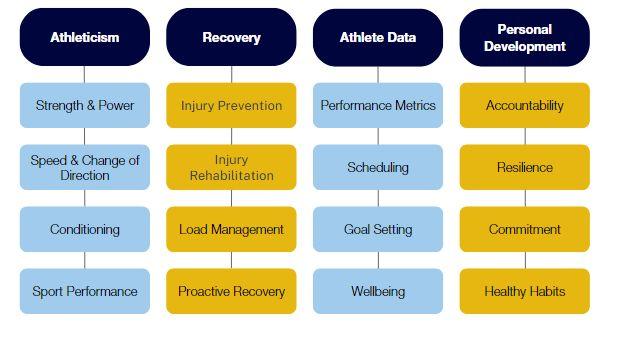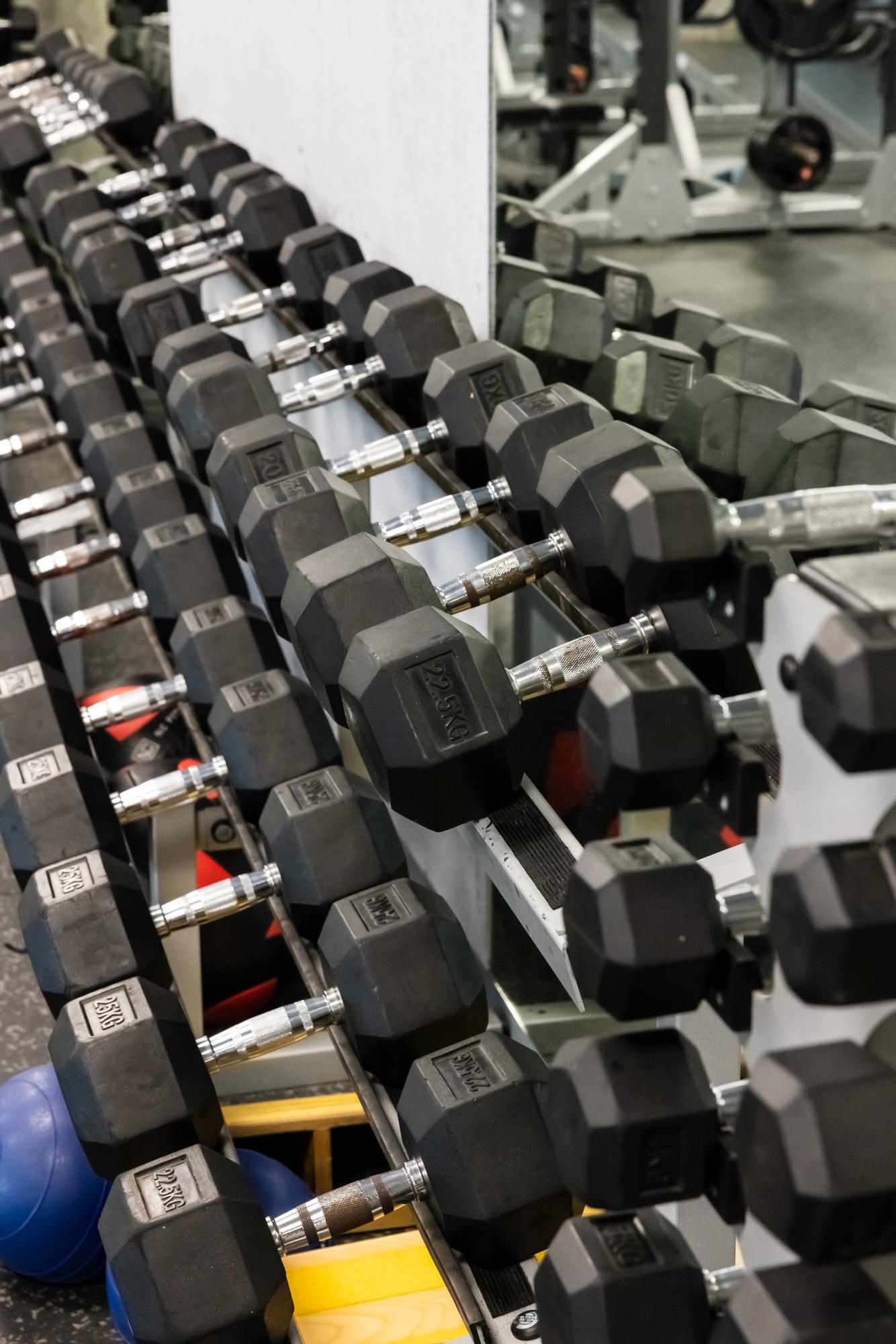






There are four main pillars of the Athlete Development Program (ADP):
Athleticism
Recovery
Athlete Data
Personal Development
The ADP is accessible to all EAP Students and is an opt-in program. Involvement is an extension to what EAP Students already have access to through CGS Strength and Conditioning. Through the four pillars, the ADP strives to create the best athlete, the available athlete.




46-54% of youth injuries are overuse injuries, which are correlated to a greater risk of burnout, overreaching and drop out.
A structured ADP reduces overuse and acute injuries by 66%.
Our ADP intends to prepare our athletes through:
○ Tailoring athlete programming to each athlete’s needs to set them up for long-term success
○ Improving overall athleticism by building strength, power and speed, transferring into sport performance
○ Decreasing injury risk by strengthening areas of weakness and tailoring programming to match the needs of their chosen sport
○ Centralising all performance and health data to direct program adaptation and advancement
○ Using sport as the vehicle for social connection and cohesion
○ Building personal characteristics of accountability, persistence and adaptability.

The ADP aims to minimise the weight of pressure on our athletes through maximising CGS resources.


The ADP involves five distinct stages to promote continual athlete development. Expectations are clearly defined at each stage to ensure athletes understand their own progression and development, celebrate their successes and focus on areas of improvement.
It is a continual cycle, with consistency and a focus on the process driving improvements and performance outcomes.


What:
Athletes complete performance testing and injury screening to identify physical strengths and weaknesses.
Why:
Assessing each athlete’s performance testing ensures programming is guided by exact numbers, not just by observation and prediction.
Performance data also provides a great insight of improvement for each athlete, motivating them to continue to build and refine their training habits and efforts.
When:
End of each term


How:
Performance testing occurs across three distinct physical domains: Strength
- Hand grip test
- 3 Rep Max Bench Press (Yr 9-12)
- 3 Rep Max Back Squat (Yr 9-12) Power
- Countermovement Jump (CMJ)
- Squat Jump
- Isometric Mid Thigh Pull Speed
- 20m Sprint Injury Screening
- Knee to Wall
- Groin Squeeze
- Single Leg Calf Raise


Using athlete performance data, individual athlete development programs are created, addressing sport needs and areas of improvement.
CGS Coaches utilise TeamBuildr to create and share athlete programs.
Individual programs are developed across holiday periods in preparation for the upcoming term.
Following program planning, slight modifications may be made based on changes in training schedules, loads and athlete fatigue but minimal large changes as this may affect consistency and program adaptations.


In order to see positive athlete development, athletes must train at appropriate intensity and progression according to:
● Chronological Age
● Training Age
● Sport
Athletes must also train with standards around:
● Consistency
● Intent


Athlete Development training opportunities vary from year level to year level:
Year 7-8
- EAP small group training:
- Monday and Thursday lunch time
- Individual training:
- Monday before school
- Wednesday lunch time
Year 9-10
- First Sport S&C Session
- Potential first period of scheduled PE class
- Individual training during Weights Room opens


Athlete Development training opportunities vary from year level to year level:
● Year 11-12
- First Sport S&C Session
- Scheduled PE class
- Individual training during Weights Room opens
On-field speed and change of direction sessions occur every Wednesday lunch time for all EAP athletes - registration required.
All training sessions, group or individual, include:
● Check-ins
● Form feedback and correction
● Training session modification according to data and feedback

Athletes are tracked and monitored in several ways:

● Athlete check-in conversations at the start of each session
● Communication with internal sport coaches
● Performance retest periods at the end of each term
● Fatigue monitoring
- Completed every Monday and Thursday in the Weights Room
● TeamBuildr
- Attendance
- Program completion
- Wellbeing markers


All tracked data is taken into consideration so that each athlete’s program can be tailored to their specific needs.
During this stage, athletes will be led through a re-evaluation process, where areas of commitment and performance are assessed. If athletes have not met expectations regarding commitment, discussions will be had about training schedules, load management and any other aspects of training that may have caused poor commitment.
Any modifications based on the re-evaluation process will be made to the athlete’s program, along with setting any new goals.
Athletes involvement in the ADP comes back to two key areas:
● Performance
- CGS and external sport development
● Commitment
- Completion of program twice a week, all year round
- 80% completion rate of TeamBuildr program
- 80% completion rate of TeamBuildr wellbeing questionnaire
- Fatigue monitoring every Monday and Thursday (CMJ testing)
- Performance testing and screening in the final two weeks of each term.
CGS academic and co-curricular commitment is also taken into consideration. Athletes are students first, meaning academic work always remains the priority.


Athletes wishing to commit to the ADP are required to complete the Registration Form and attach all appropriate information.
Once registered, a follow up email will be sent informing you of Performance Testing expectations, dates and times along with any other information.
From here, initial Performance Testing will occur in the final week of Term 2, with programming commencing in the first week of Term 3.
Please direct all questions to Josh Holding - sc3@cgs.vic.edu.au



